Trees: Sycamore
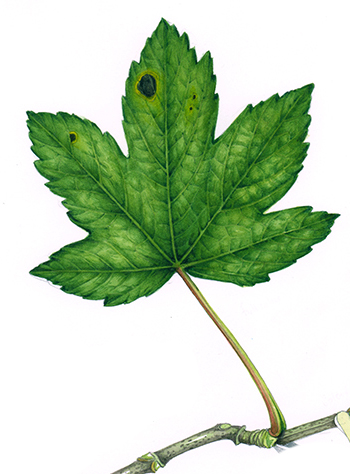
Trees: Sycamore Acer pseudoplatanus is a maple, and is Europe’s largest maple species. It’s easy to recognise, is common, and has some interesting folklore.
Identification: Tree shape
The tree grows to 35m and has a domed outline, with dense foliage. Trees often have heavy lower branches. It’s a deciduous species, and grows fast in a wide range of habitats, including windy and salty areas.
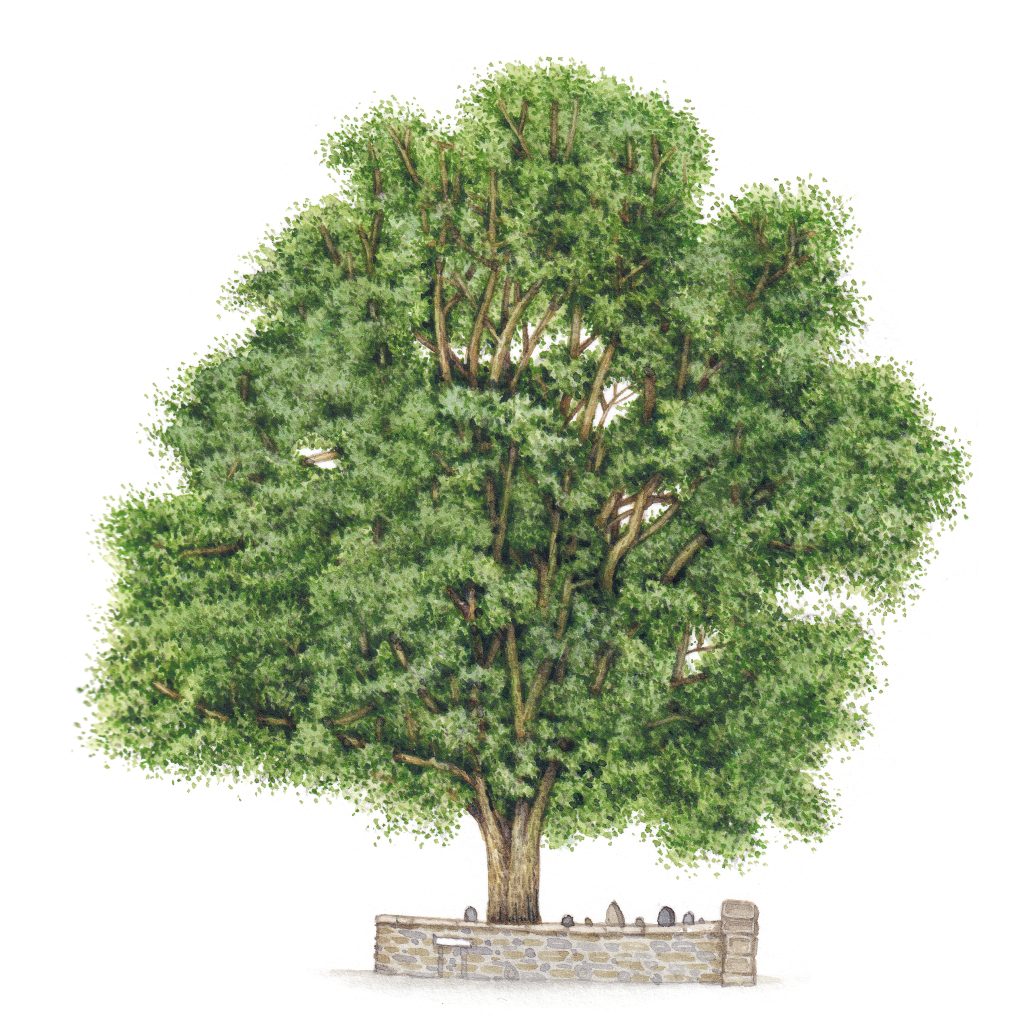
Identification: Leaves
Sycamore have large, distinctive five lobed leaves, 6 – 17cm wide. Upper lobes cut through the leaf to around the mid-point, while the bottom lobes may not be fully separated from the rest of the leaf. Margins are bluntly toothed (for more on leaf margins see my blog https://lizzieharper.co.uk/2013/11/leaf-shape-margins-venation-and-position/). The upper surface of the leaf is a dark green in mature leaves, paler underneath.
Leaves frequently have black spots, known as “tar spot”. This is caused by the Rhytisma acerimun fungus and seems to do no harm.
Leaf stalks are frequently flushed a striking scarlet.

In autumn, the leaves tend to turn pale yellow to ochre, and often are still flushed with green when they fall from the tree. For information on how to illustrate an autumn Sycamore leaf, check out my blog.
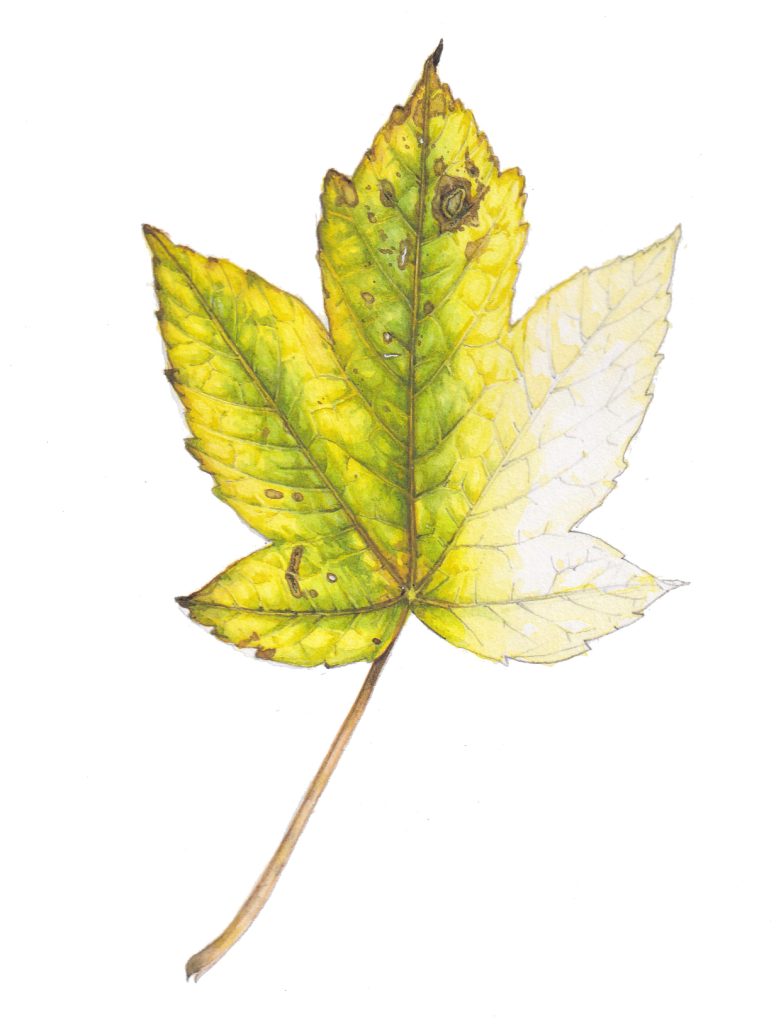
Identification: Flowers
Flowers appear at the same time as the leaves, and are tumbling racemes of tiny yellow-green blossoms, each panicle from 5 – 20cm long.
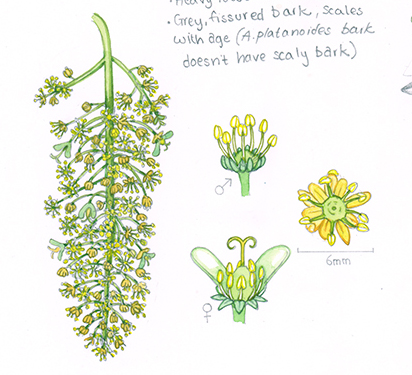
Both sepals and petals are small and yellow-green, and the first flowers to appear are males, with 8 stamens. Once fruits begin to form, the male flowers borne on the same panicle will bloom. This avoid self-pollination.

They are a good source of pollen and nectar to visiting insects.
Identification: Fruit
The winged seeds of the Sycamore may well be the most instantly recognisable aspect of this tree. They’re paired, but separate and spin as they fall, earning them the nickname of “helicopters”.
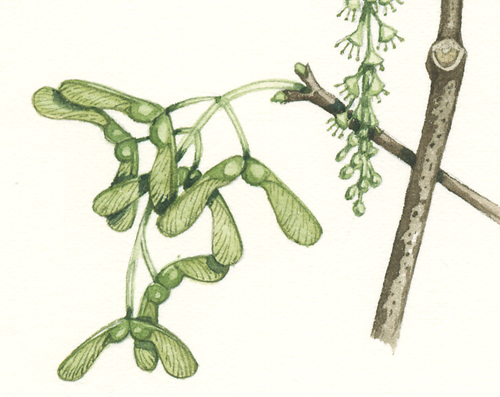
The angle between the two seeds is acute and narrow (Compared to other Acers) – this is relevant in distinguishing it from other maple species.
Identification: Bark
Bark of the Sycamore is grey-ish and cracked. It matures to a pink-brown colour.
Similar Species
The Norway maple Acer platanoides and Field maple Acer campestre are also pretty common in Britain, but the species are easy enough to tell apart.
Norway maple is a smaller and thinner tree than the sycamore, with a maximum height of 27m. It has paler, spikier leaves, and longer petioles. Flowers are borne in upright racemes, and appear before the leaves. The Norway maple fruit have a wider space between them than the Sycamore.
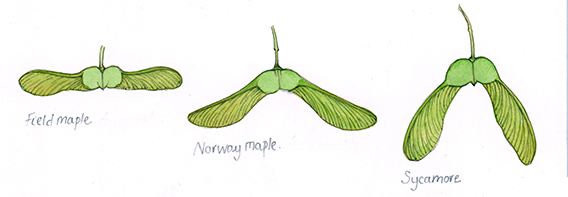
Field maple Norway maple Sycamore
Field maple is smaller than Sycamore, reaching 26m. its leaves are smaller, and bluntly toothed, and have five lobes which are less deeply cut than Sycamore leaves. Flowers are borne in erect clusters. The winged fruit are very widely spaced, almost in a straight line.
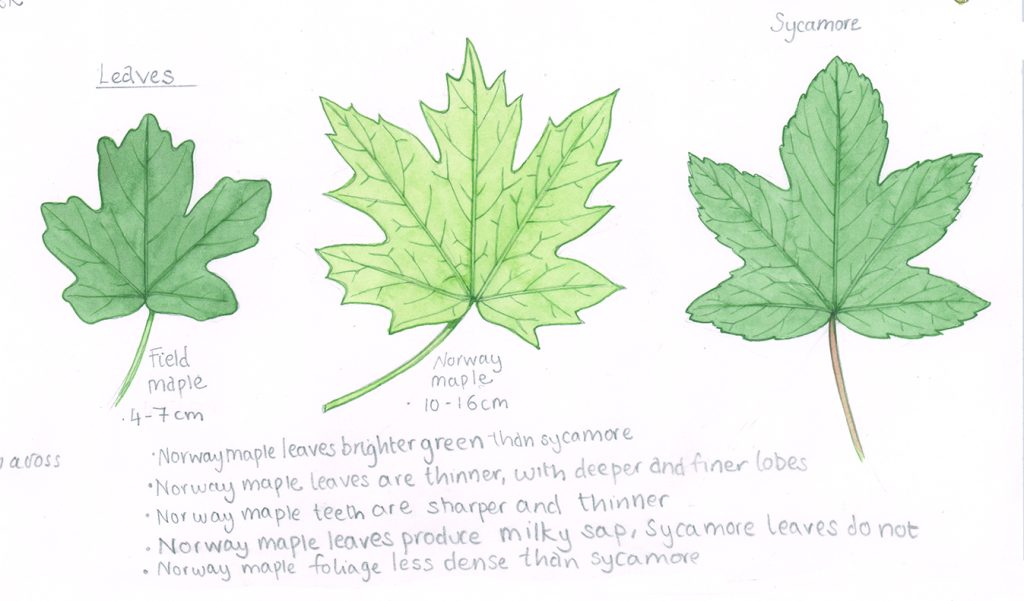
Field maple Norway maple Sycamore
History
Sycamore was only introduced to the UK at the end of the 15thC, so would have been a novelty to King Henry VIII as he went hunting with his courtiers.
Because it can tolerate wind, it was often planted near houses and isolated farms. There it would not only act as a wind break, but also cast a deep shadow that would keep the dairy cool in summer.
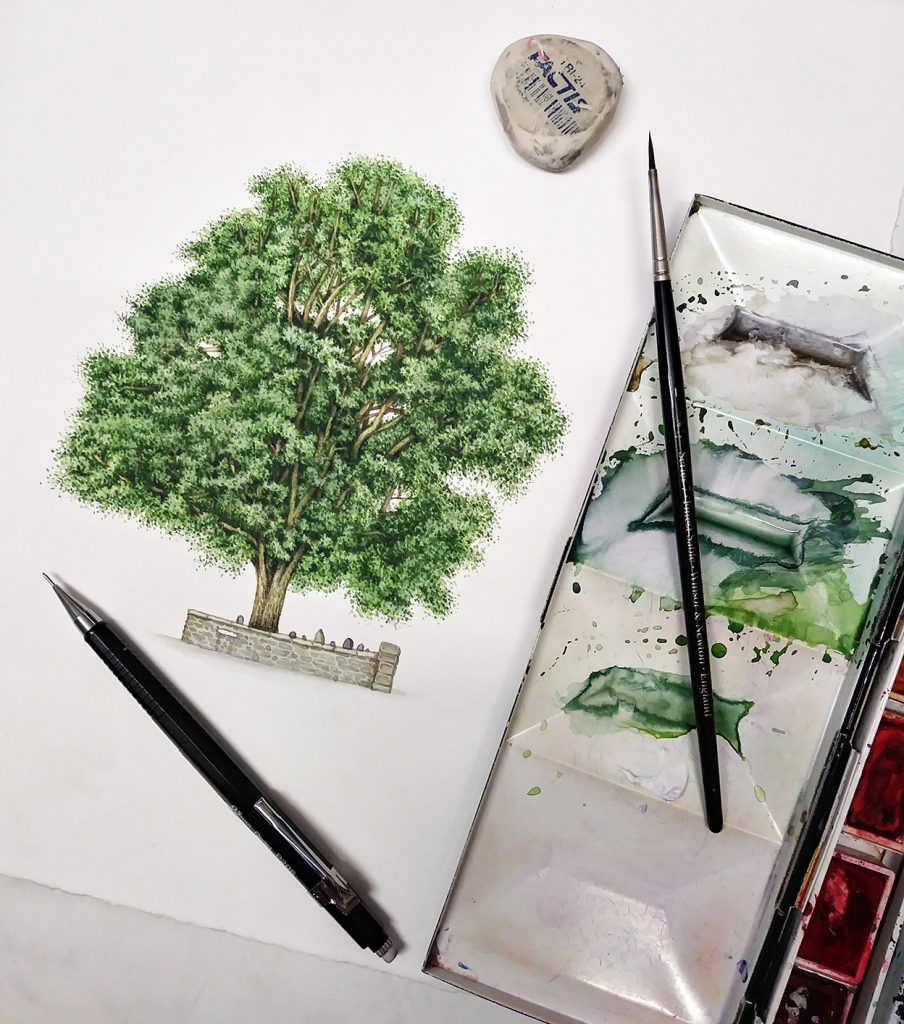
On a more sombre note, Sycamore were used for gallows in the West of Scotland, earning them the moniker “dool trees” (“grief trees).
A Sycamore planted nest to an Ash warned coachmen of a crossroads ahead.
Beneath a Sycamore tree in Dorset, the Tolpuddle Martyrs met in 1834. They formed a society that would demand wages which didn’t leave them and their families starving, and were transported to Australia for their pains (but were pardoned and returned home 2 years later). The tree still stands and is known as the Martyr’s Tree.
Uses
Sycamore wood is pale, easy to work, and resistant to warping. It’s also fast growing, with trees being ready for felling at 60 years.
Furniture makers and wood turners use the wood, and it makes attractive rippled veneers.
It’s been used to make milk buckets as it didn’t flavour the milk. Sycamore wood rollers in textile mills didn’t splinter, so the cloth remained without snags and undamaged.
It’s also been used for musical instruments, especially violins
Conclusion
Although it’s a relative new-comer to Britain, Sycamore trees are now widespread in many habitats. It’s useful for timber, holds a place in history, and is pretty easy to identify. And the winged seeds are always fun to fling into the air, and watch as they spiral neatly back down to earth.

References for this blog include the excellent “The Greenwood Trees” by Christina Hart-Davies , and the Reader’s Digest “The Field Guide to the Trees and Shrubs of Britain” (out of print but commonly available second-hand)


I love love loveeeeeee this Blog!!!!!! Thank you for all thes beauty, Thanks!!!!
I love this blog too but I still have no idea what kind of tree I have.
Hey Jen, take a photo of the tree, and a close up of the ,eaf and any flowers or bark. Im not an expert, but if you email them to me at info@lizzieharper.co.uk Ill have a look for you and see if I have any ideas?